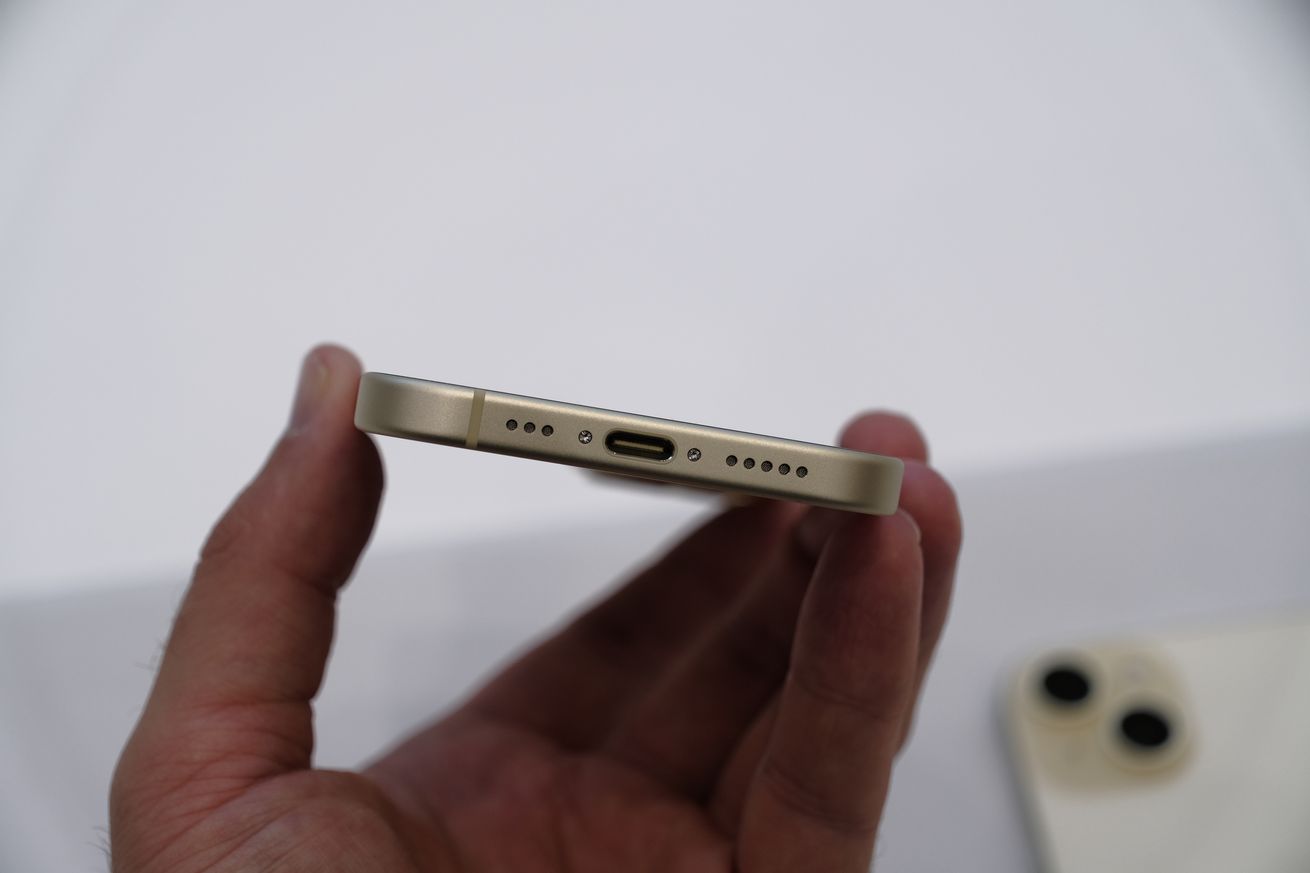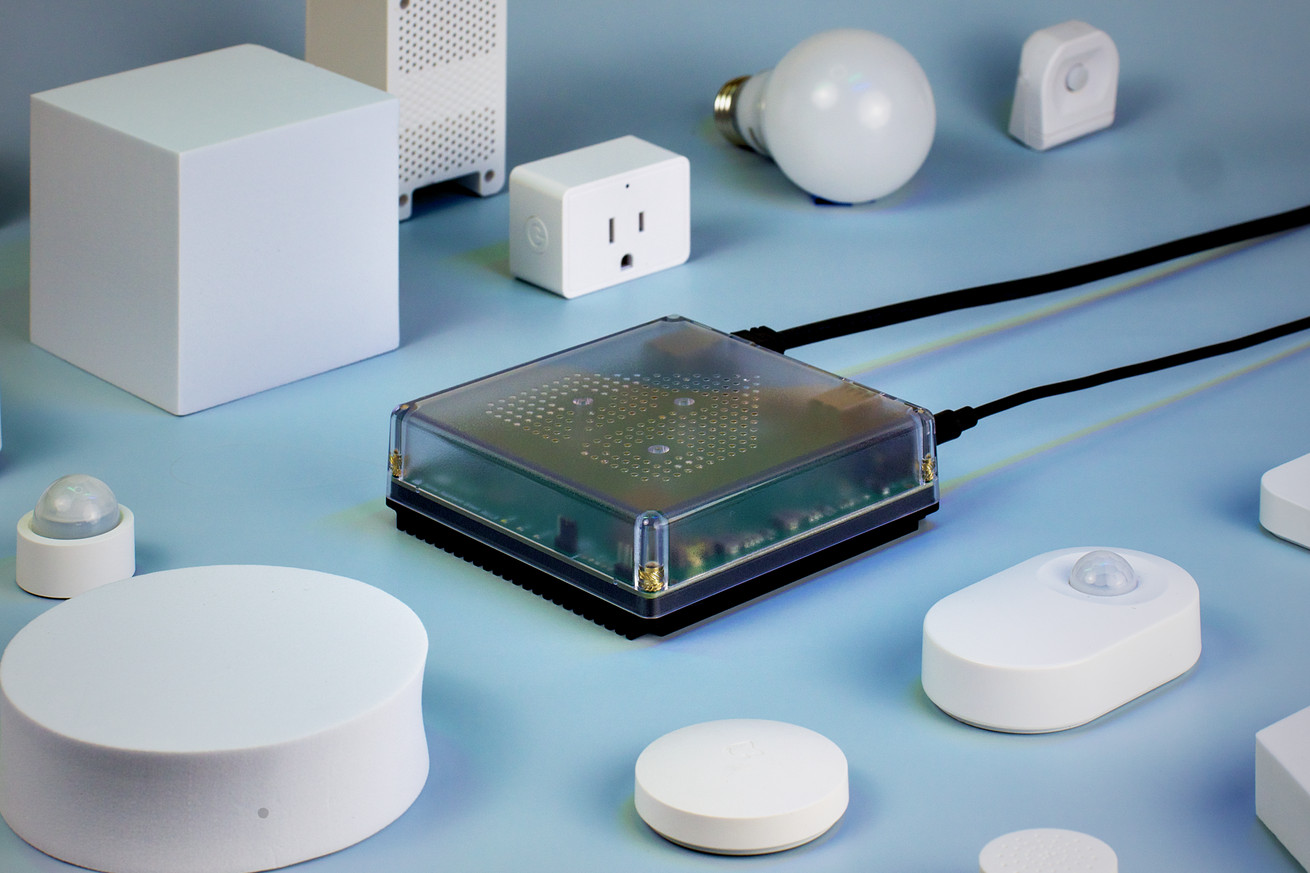With stereo sound, twice the battery life, and line-in playback, the Move 2 improves upon the original at every turn — unless you need Google Assistant.
When you’re considering the sequel of any tech product, it’s easy to jump to the conclusion that it’s “everything the original should’ve been.” And as I’ve been testing out the new $449 Sonos Move 2 speaker over the last several days, it’s been tempting to lean on that narrative. The Move 2 improves upon the company’s first portable speaker with better, broader sound — it now does stereo instead of just mono audio output — and huge strides in battery life. It’s also more versatile thanks to the inclusion of line in and the ability to reverse charge your phone and other devices via the speaker’s USB-C port. The only downside might be that all of those improvements come with a $50 price hike.
But in truth, the first Move was never going to be anything like this. It came before Sonos figured out how to seamlessly juggle Bluetooth audio with music played over its Wi-Fi-based whole-home audio platform; you had to choose one or the other via a button on the back. (Sonos solved that awkward dilemma with its much more compact Roam speaker.) At the time of the Move’s release, the entry-level Sonos One was also limited to mono playback. It wasn’t until the Era 100 that the company crammed two tweeters into a relatively small single speaker enclosure. Now, it’s running the same play with the Move 2, giving the product dedicated left and right channels instead of blending everything together. But time hasn’t benefited the Move 2 in all ways: amid an ongoing legal rift between Sonos and Google, this smart speaker ships without Google Assistant, which is present on the first-gen hardware.
Save for the tweaked controls on top, the Move 2’s looks haven’t changed much. It’s still the same shape. And it’s still fairly tall (9.53 inches) and weighty (6.61 pounds) to be considered very “portable” — but at least you’ve got the built-in handle for carrying it around. As with the first Move, this is really designed to be moved around different spots inside and outside your home, not so much to accompany you to the beach like a traditional Bluetooth speaker.
/cdn.vox-cdn.com/uploads/chorus_asset/file/24929138/DSCF2948_2.jpg)
Apart from the standard black and white options, Sonos is offering a green color of the Move 2, and I’ve really come to enjoy the olive shade while reviewing it. It’s not overly bold, but it’s stylish and not boring. In the box, you get a wireless charging base station, and unlike the first time around, this one can be detached from its wall plug instead of the whole thing being hardwired. As before, the Move 2 can alternatively be charged through its USB-C port.
Around back is the power button, Bluetooth pairing button, a physical switch for the Move 2’s built-in microphones, and the USB-C port. In keeping with the original, the Move 2 supports automatic Trueplay, which uses the microphones to analyze the speaker’s surroundings and optimize the sound whenever you move it to a new spot. Hands-free voice controls are possible with both Sonos Voice Control and Amazon Alexa. There are two ways to disable the mics: you can tap a speech bubble button on top of the speaker to deactivate voice assistants while keeping features like auto Trueplay enabled. If you want to shut off the microphones altogether, that’s what the rear switch is for.
/cdn.vox-cdn.com/uploads/chorus_asset/file/24929757/DSCF2926_2.jpg)
But Google Assistant remains absent after first being dropped from the Era lineup. With JBL now offering a speaker that concurrently runs Alexa and Assistant, I’m really hoping that Sonos and Google can put their legal quarrels aside and figure out a way to bring Assistant back into the fold. For a certain set of customers, its absence makes the Move 2 a nonstarter.
Another aspect of the Move 2 that disappoints me (albeit to a lesser degree) is that it can’t serve as a speakerphone for calls. If the thing works with Bluetooth and has mics that I’m already speaking to on a semi-regular basis, why not go the rest of the way, Sonos? Many lower-priced Bluetooth speakers and even Apple’s Bluetooth-less HomePods include this feature, so it’s frustrating to see Sonos omit it yet again.
/cdn.vox-cdn.com/uploads/chorus_asset/file/24920149/DSCF2932.jpg)
But there are several ways in which the company has favorably expanded the Move 2’s capabilities. Like the Eras, it supports line-in (if you purchase Sonos’ $19 USB-C adapter) so you can plug any audio source, such as a turntable, into the speaker and play that content across the rest of your Sonos system. Anything you’re listening to over Bluetooth can also be synchronized across your grouped speakers, which is a convenience that the first-generation Move lacked. Sonos continues to support Apple’s AirPlay 2, and you can directly control its speakers with music services including Spotify, Pandora, Tidal, and many more.
/cdn.vox-cdn.com/uploads/chorus_asset/file/24929565/DSCF2968_2.jpg)
Another new trick is that the rear USB-C port can be used for charging external devices. It supplies 7.5 watts of power, which isn’t particularly fast, but it’s a good fallback if your phone battery is running low when you’re playing tunes at the park or beach far removed from any outlet.
Battery life on the Move 2 has more than doubled, with Sonos saying it can reach up to 24 hours of continuous playback. That big jump can be attributed to two things: there’s a larger 44Wh battery inside, and the company also made power-saving optimizations under the hood. The bigger battery is backward-compatible with the original Move, but dropping it into that speaker won’t magically get you 24 hours of listening time since the first-gen Move lacks some of the newer efficiency tweaks.
“Placing a Move 2 battery in an original Move will increase the Move’s battery life by about 25 percent, yielding around 13.5 hours of battery life,” Sonos spokesperson Olivia Singer told me by email. “Move 2 has a much more efficient system which contributes to the additional playback improvements.” Either way, I very much appreciate that the battery is easily replaceable to begin with; this ensures a long lifespan for the Move 2 compared to many consumer speakers where the battery will gradually hold less of a charge over time.
/cdn.vox-cdn.com/uploads/chorus_asset/file/24920161/DSCF2979.jpg)
I’ve said more than a few times that the original Move became my favorite overall Sonos product because of its portability and potent sound. The Move 2’s upgrade to stereo isn’t a monumental change — a single-unit speaker is limited in how much separation it can produce — but you can clearly hear the difference. When playing a test file, I could easily distinguish the left and right tweeters within the Move 2. The main benefit of this stereo arrangement is that you won’t need to worry about details of a song being lost in the background as can happen when everything is downmixed to mono.
The overall sound signature is faithful to the original Move, meaning the Move 2 still has a tendency to underemphasize treble; I’m also currently testing the new similarly shaped Ultimate Ears Epicboom, and the UE speaker puts a bigger focus on those crisp upper frequencies while Sonos takes a more even-handed approach. If you want more high end, that’s easy to accomplish using EQ sliders in the Sonos app. Bass response was more than adequate for my needs, but I can see some people wanting more oomph from the Move 2 when really cranking the volume.
/cdn.vox-cdn.com/uploads/chorus_asset/file/24929693/DSCF2956_2.jpg)
Among Sonos’ other speakers, I’d rank the Move 2 below the flagship Sonos Five and the Atmos-oriented Era 300. You’re basically getting a wireless Era 100 that can be taken anywhere, and that’s an enticing thought. Like any of the company’s speakers, you can stereo-pair two Move 2s if you want that wider, more immersive presentation that a single unit can’t quite pull off by itself. But as this is a device meant to be moved around, a stereo pair might not be as practical here as with Sonos’ other speakers.
On that point, the Move 2 is in no way as “portable” or easy to pack with luggage as a Roam, but it’s no trouble to carry around the house, bring out to the backyard, or throw into the trunk when traveling. If you plan to take it on the road constantly, Sonos sells an extremely overpriced $79 carrying case. The original Move came with a fabric carrying bag, but that’s gone this time, and Sonos told me it was only ever intended to keep the speaker protected during transit and shipping.
/cdn.vox-cdn.com/uploads/chorus_asset/file/24920166/DSCF3001_2.jpg)
If you already own the original speaker, you’re no doubt wondering whether this one is worth an upgrade. In most cases, assuming you’re satisfied with what the Move has offered to this point, I’d say the answer is no. The original remains an excellent product — especially if you bought it on sale. But if you constantly find yourself exhausting the Move’s battery or already have a use in mind for the Move 2’s line-in feature, then stepping up to the new one starts to make more sense. The stereo sound will be more enjoyable and truer to your favorite music, but that alone isn’t enough to fork over $450.
As a complete package, the Move 2 is a slam-dunk sequel that will only get better when you factor in Sonos’ long-term software support. The company needed to draw on lessons learned from other products to get here, but anyone who loved the first Move will find even greater value in its successor. Hopefully Google Assistant will eventually make a comeback. But even if not, the Move 2 offers plenty of features and good enough sound to make it a unique standout in Sonos’ hardware lineup.
Photography by Chris Welch / The Verge


/cdn.vox-cdn.com/uploads/chorus_asset/file/24931025/oGLG2xM.png) Image: US Courts
Image: US Courts
/cdn.vox-cdn.com/uploads/chorus_asset/file/24931026/SBeaRhx.png) Image: US Courts
Image: US Courts

/cdn.vox-cdn.com/uploads/chorus_asset/file/24930992/2qrsjMJ.png) Image: US Courts
Image: US Courts
/cdn.vox-cdn.com/uploads/chorus_asset/file/24930994/spenceremail.jpg) Image: US Courts
Image: US Courts



/cdn.vox-cdn.com/uploads/chorus_asset/file/24925210/Home_Assistant_Green___Angled_view_back.png) Image: Home Assistant
Image: Home Assistant
/cdn.vox-cdn.com/uploads/chorus_asset/file/24925230/Home_Assistant_Green_Yellow_and_Blue_group.png) Image: Home Assistant
Image: Home Assistant
/cdn.vox-cdn.com/uploads/chorus_asset/file/24925190/image2.png) Image: Chris Person / The Verge
Image: Chris Person / The Verge
/cdn.vox-cdn.com/uploads/chorus_asset/file/24925182/image1.png) Image: Home Assistant
Image: Home Assistant


/cdn.vox-cdn.com/uploads/chorus_asset/file/24924800/IMG_63B62D28F622_1.jpeg) Image: Graham MacAree / The Verge
Image: Graham MacAree / The Verge

/cdn.vox-cdn.com/uploads/chorus_asset/file/24925649/IMG_0697.jpeg) Photo by Umar Shakir / The Verge
Photo by Umar Shakir / The Verge
/cdn.vox-cdn.com/uploads/chorus_asset/file/24063992/USB_Performance_Logos.jpg) Image: USB-IF
Image: USB-IF
/cdn.vox-cdn.com/uploads/chorus_asset/file/24525448/236583_Nomad_Stand_One_MagSafe_ADiBenedetto_0008.jpg) Photo by Antonio G. Di Benedetto / The Verge
Photo by Antonio G. Di Benedetto / The Verge

/cdn.vox-cdn.com/uploads/chorus_asset/file/22024810/dbohn_201109_4283_0004.0.jpg) Photo by Dieter Bohn / The Verge
Photo by Dieter Bohn / The Verge


